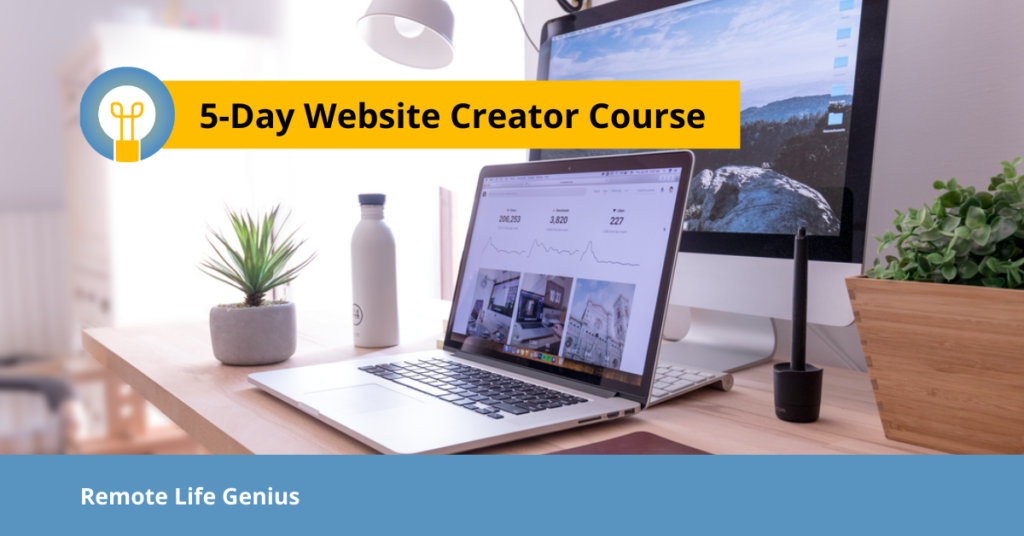 Whether you want to leave your job or add a side hustle, there are plenty of reasons to start freelancing.
Whether you want to leave your job or add a side hustle, there are plenty of reasons to start freelancing.
Are you drawn to the idea of freelancing but worried about having a full-time job too? It might seem daunting, and yes, there are challenges, but there are plenty of benefits too.
With a side hustle, you can earn more money, hone different skills, and work on projects that excite you. The question then becomes, how to pull it off? Here’s how to get started and be successful at freelancing while keeping your job.
Page Contents
Stay connected to your “why”
When you’re freelancing it’s easy to get wrapped up in finding clients and taking on a lot of projects. Defining your purpose will help you choose the best clients for you and draw boundaries on your time.
Your “why” may change over time, but if you’re getting started, here are some questions to ask yourself:
- Do I want to keep my job or eventually freelance full-time?
- If this is for supplemental income, how much money do I want to make each month?
- If I want to quit my full-time job, how much money do I need to make each month freelancing?
- What type of skills/tasks do I enjoy doing?
- What type of skills/tasks will people pay me to do?
- Is there a specific industry or type of work I’m drawn to?
- Do you have a job where the work-load changes seasonally?
Write down your “why” somewhere that you can revisit in the future.
Time-block and set boundaries
Whether your goals are full-time or part-time, you still need to put time into freelancing. When you have a full-time job, it’s important to understand how much time you have for other projects. The easiest way to look at this is by time-blocking one week. Figure out the time you have available once your job is taken into account.
So, when mapping out a typical week, start with blocking off time spent on your job. Ask yourself the following:
- What does your schedule look like?
- Is it Monday-Friday 9-5?
- How much time do you factor for your commute?
- Are there other time commitments you can’t change?
Fill that out first and then you will have the time left over for freelancing.
Now, it’s important to block out and dedicate the remaining time you have. Choose a schedule that works for you. Is it waking up early and spending two hours each morning? Is it an hour each night plus a full day on Saturday?
Remember that up to 25% of the time you spend might go to administration tasks. These include finding clients, writing proposals, preparing invoices, and giving client updates.
Remember, this can evolve as your freelance business evolves. Freelance work is less predictable, and each project can be different. But, doing this work lets you know what your maximum availability is.
Get in the habit of over-delivering
To be a successful freelancer and employee, focus on consistently delivering high-quality results. If you want to keep your full-time job you can’t let freelancing affect your performance. Likewise, if you want to build a solid track record as a freelancer, you need happy clients. That’s why it’s important to get in the habit of under-promising and over-delivering.
This isn’t to say you should sell yourself short, but avoid over-promising, it can get you in trouble. So, adopt a habit of over-delivering to ensure your work doesn’t suffer under pressure.
Adopting a mindset of over-delivering requires ruthless prioritization and excellent communication. Take time to understand project goals and verify your assumptions. It might feel time-consuming in the beginning, but it pays off in the end. Remember, it’s always easier to pivot early on before you have a finished product.
Have fun with it
 Freelancing on top of an existing job is challenging, but can be immensely rewarding. This is an opportunity to learn new skills, expand your network, and work on projects that excite you. Enjoying your work doesn’t mean you’re not working hard. In fact, it’s usually the opposite.
Freelancing on top of an existing job is challenging, but can be immensely rewarding. This is an opportunity to learn new skills, expand your network, and work on projects that excite you. Enjoying your work doesn’t mean you’re not working hard. In fact, it’s usually the opposite.
If you find work you love, you’ll naturally put you’re all into it. That being said, give yourself permission to be picky about projects. Learn to say “no” to the prospects that aren’t right for you.
Depending on your goals, this may not always be possible. If your main goal is to earn extra money, you may find yourself working on projects that don’t thrill you. When that happens try to find an industry that interests you or work that involves doing tasks you genuinely enjoy. It may not be your number one passion, but you can still enjoy the work.
Quick tip. Adding an intrinsic motivation for every project can help keep motivation up. This makes it about something more than money. Challenge yourself to do learn a new skill or complete certain tasks faster.
Be Honest
One of the most important skills of freelancing is clear communication. This is especially true if you have a full-time job. Tell your freelance clients that you have a full-time job and when they can expect to reach you or hear from you. If possible, give your clients a way to contact you for urgent questions or updates. Most clients respect your time and this way they know why they don’t hear from you right away.
If you can tell your coworkers and managers about your freelance gig, it’s always good to do so. Part of growing an online business means having an online presence. This might mean adding it to your Linkedin or sharing freelance updates. It’s better if your team at work hears about it directly from you first. And you’ll be better off not trying to hide anything or keep your two jobs separate.
When telling your manager, make sure to state that your performance at work is a top priority. Let him or her know about the boundaries you’ve set to protect your work performance.
In conclusion
Freelancing is a great opportunity to supplement your income and grow professionally. It takes extra organization and commitment to have a full-time job and a side hustle, but it’s rewarding. Keep these tips handy to make sure that you’re making decisions that are best for you.
If you’re ready to take the next step, enroll in our 5-Day Website Creator Course. Spend less time finding clients and more time winning new gigs with a professional website. We’ll deliver exclusive step-by-step tutorials right to your inbox.
Want to read again later? Pin to save these tips!




